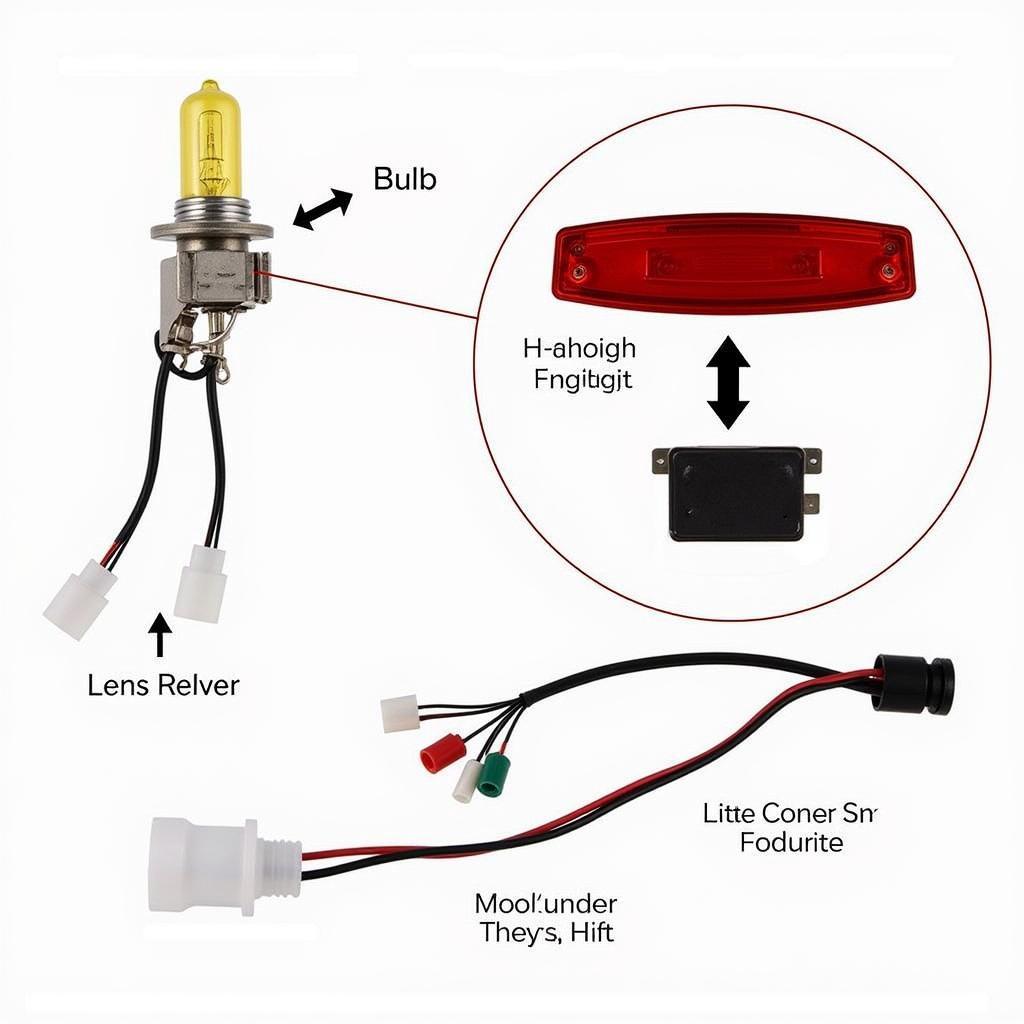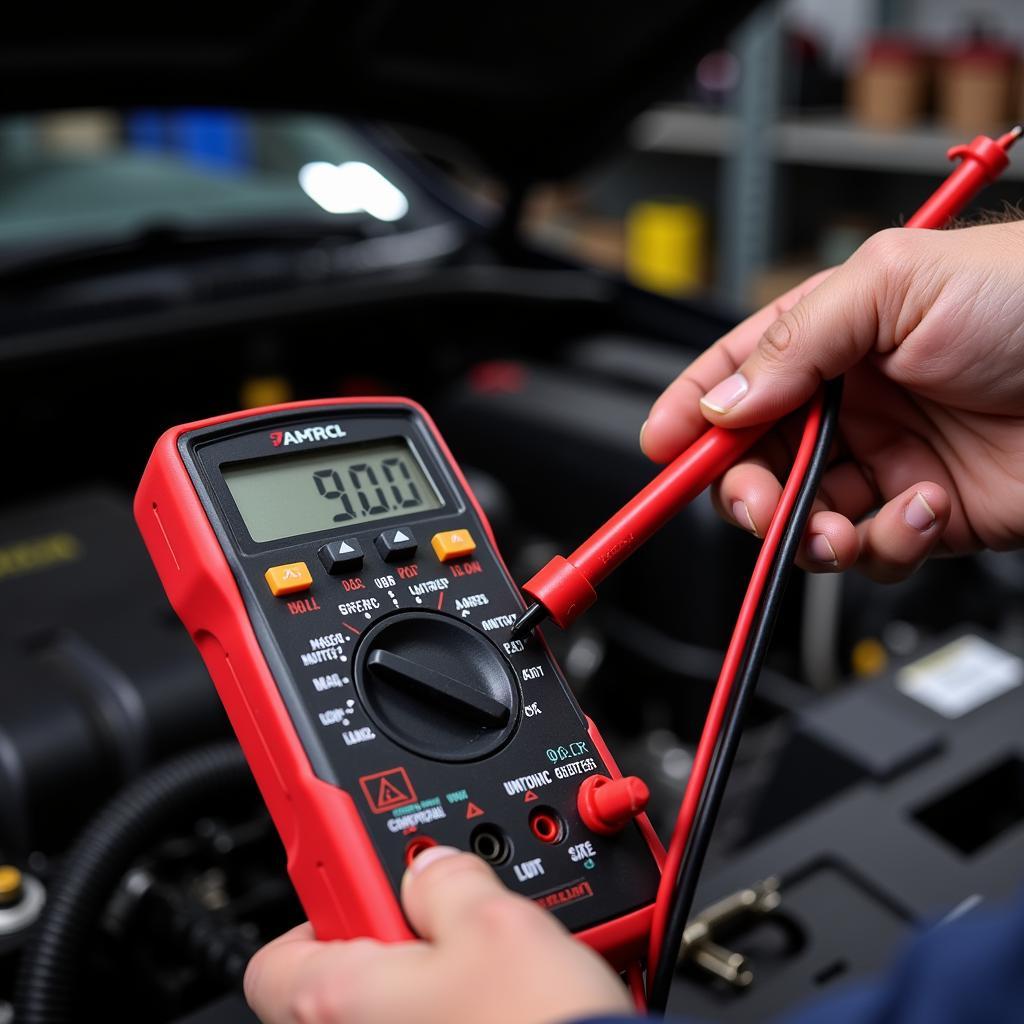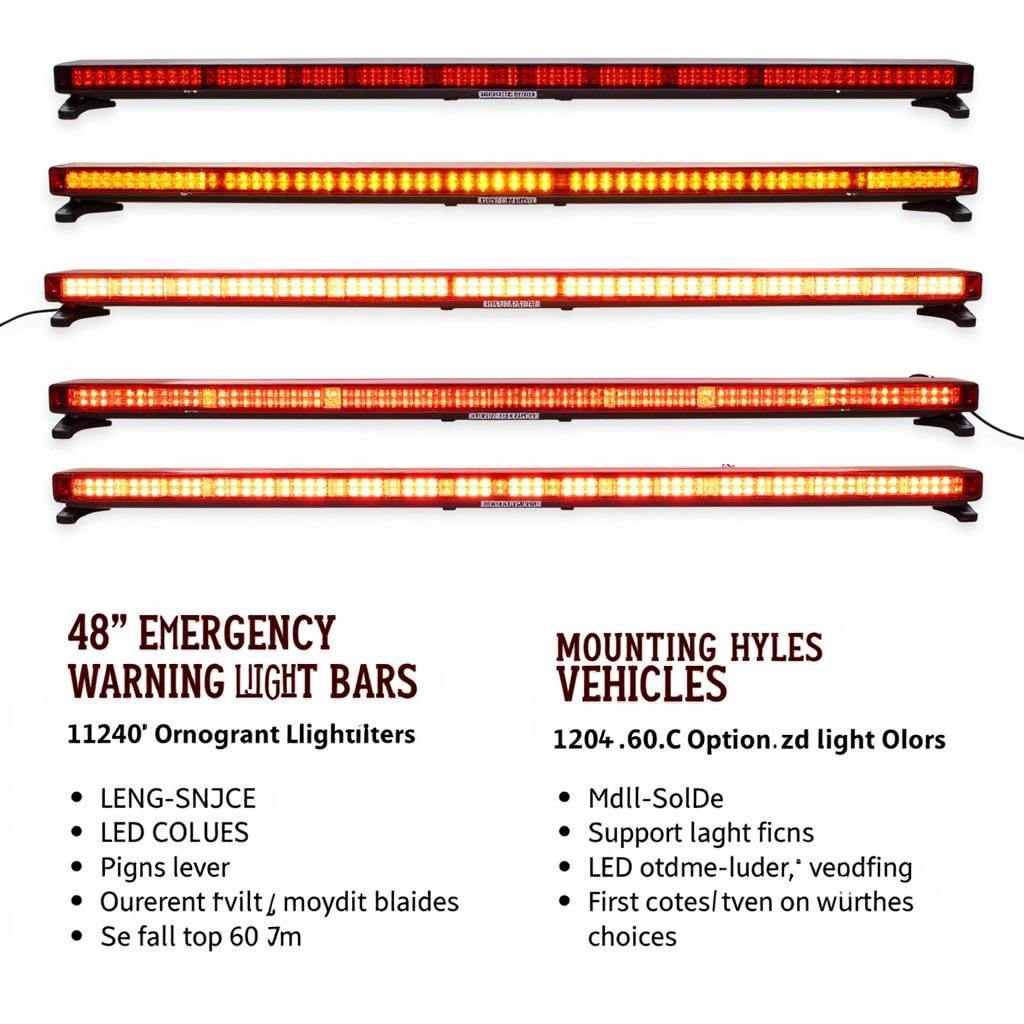The third brake light, often integrated into your vehicle’s rear spoiler or mounted above the rear window, plays a critical role in preventing rear-end collisions. When it malfunctions, especially in conjunction with other emergency warning lights, it signals a potential safety hazard that requires immediate attention. This comprehensive guide will delve into the common causes of a malfunctioning third brake light and emergency warning lights, provide step-by-step diagnostic procedures, and offer potential solutions for a safe and confident driving experience.
Understanding the Importance of the 3rd Brake Light
The third brake light, also known as the high-mounted stop lamp, serves as a crucial visual alert for trailing vehicles. Its elevated position provides increased visibility, particularly in heavy traffic or adverse weather conditions. When functioning correctly, the third brake light illuminates brightly upon pressing the brake pedal, signaling to drivers behind you to slow down and maintain a safe following distance.
Why is My 3rd Brake Light Not Working?
A malfunctioning third brake light can be attributed to various factors, ranging from simple bulb failures to more complex electrical issues. Here are some of the most common culprits:
-
Burnt Out Bulb: Similar to traditional brake lights, the third brake light relies on a bulb that can burn out over time. This is often the easiest issue to diagnose and rectify.
-
Blown Fuse: A blown fuse in your vehicle’s electrical system can disrupt the flow of power to the third brake light, rendering it inoperable. Identifying and replacing the blown fuse is usually a straightforward fix.
-
Wiring Problems: Loose, corroded, or damaged wiring within the brake light circuit can interrupt the electrical connection, preventing the third brake light from receiving power.
-
Faulty Brake Light Switch: The brake light switch, activated when you depress the brake pedal, plays a pivotal role in signaling the brake lights to illuminate. A malfunctioning switch can disrupt this signal, affecting all brake lights, including the third brake light.
-
Water Damage: Exposure to moisture due to leaks or water intrusion can damage the third brake light assembly, leading to electrical malfunctions or bulb failure.
 Third Brake Light Components
Third Brake Light Components
Emergency Warning Lights: Deciphering the Dashboard Symphony
Modern vehicles are equipped with a sophisticated network of sensors and electronic control units (ECUs) that constantly monitor various systems. When an anomaly is detected, the ECU triggers specific warning lights on your dashboard to alert you to potential issues. Here’s a breakdown of some common emergency warning lights related to brake systems and electrical faults:
-
Brake Warning Light: This light, often depicted as a red circle with an exclamation mark or the word “BRAKE,” typically illuminates when the parking brake is engaged or if there’s a problem with the hydraulic brake system.
-
ABS Warning Light: The Anti-lock Braking System (ABS) light, usually displaying “ABS” or a similar symbol, indicates a potential issue with the ABS system. While this doesn’t directly affect the third brake light, it warrants attention as it compromises your vehicle’s ability to prevent wheel lockup during hard braking.
-
Battery Warning Light: Resembling a car battery with positive (+) and negative (-) terminals, this light warns of a potential problem with the vehicle’s charging system. If the battery isn’t charging properly, it can affect the performance of various electrical components, including the lights.
 Car Dashboard Warning Lights
Car Dashboard Warning Lights
Troubleshooting 3rd Brake Light and Emergency Warning Lights
Before diving into repairs, it’s crucial to systematically diagnose the root cause of the problem. Here’s a step-by-step guide to help you troubleshoot your third brake light and any associated emergency warning lights:
-
Safety First: Always prioritize safety when working on your vehicle. Park on a level surface, engage the parking brake, and disconnect the negative battery cable before proceeding.
-
Check the Bulb: Begin with the simplest solution: inspect the third brake light bulb for any signs of damage or burnout. If the filament is broken or the bulb appears blackened, it needs replacement.
-
Inspect the Fuse: Locate the fuse box, typically found under the dashboard or in the engine compartment, and consult your vehicle’s owner’s manual to identify the fuse associated with the brake lights. Examine the fuse for any signs of a break or discoloration, indicating a blown fuse. Replace a blown fuse with a new one of the same amperage rating.
-
Examine the Wiring: Carefully inspect the wiring harness leading to the third brake light for any signs of looseness, corrosion, or damage. Wiggle the wires gently to check for intermittent connections. Repair or replace any damaged or corroded wires as needed.
-
Test the Brake Light Switch: The brake light switch is usually located under the dashboard, near the brake pedal arm. You can test it by depressing the brake pedal and feeling for a distinct click as the switch activates. If the switch feels loose, doesn’t click, or requires excessive force to activate, it may need replacement.
-
Seek Professional Help: If the above steps don’t resolve the issue or if you’re uncomfortable working on your vehicle’s electrical system, it’s best to seek assistance from a qualified automotive electrician or mechanic. They have the expertise, tools, and diagnostic equipment to accurately diagnose and repair complex electrical faults.
 Mechanic Inspecting Car Wiring
Mechanic Inspecting Car Wiring
Remote Diagnostic and Programming Services
In today’s technologically advanced automotive landscape, remote diagnostic and programming services have emerged as a convenient and efficient solution for certain vehicle issues.
“Remote diagnostics allow us to connect to your vehicle’s onboard computer system wirelessly, retrieve diagnostic trouble codes (DTCs), and analyze real-time data from various sensors.” – John Smith, Senior Automotive Diagnostic Technician at XYZ Auto Services.
This can be particularly helpful for identifying software-related glitches or issues with electronic control units that may be contributing to the malfunctioning third brake light. However, it’s important to note that not all problems can be diagnosed or repaired remotely, and physical inspection and intervention may still be required in certain cases.
Conclusion
A malfunctioning third brake light and illuminated emergency warning lights are not issues to be ignored. They signal potential safety hazards that require prompt attention to ensure your safety and the safety of others on the road. By understanding the common causes, following the troubleshooting steps outlined in this guide, and seeking professional help when needed, you can address these issues effectively and maintain a safe and reliable vehicle.


